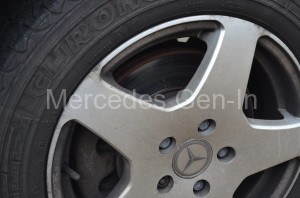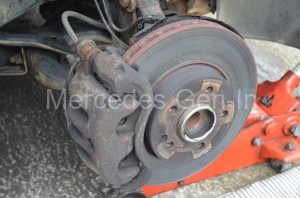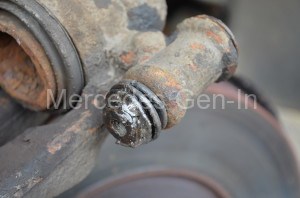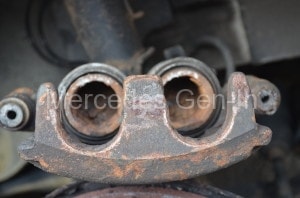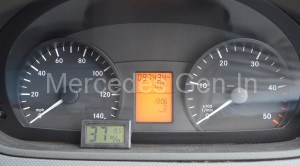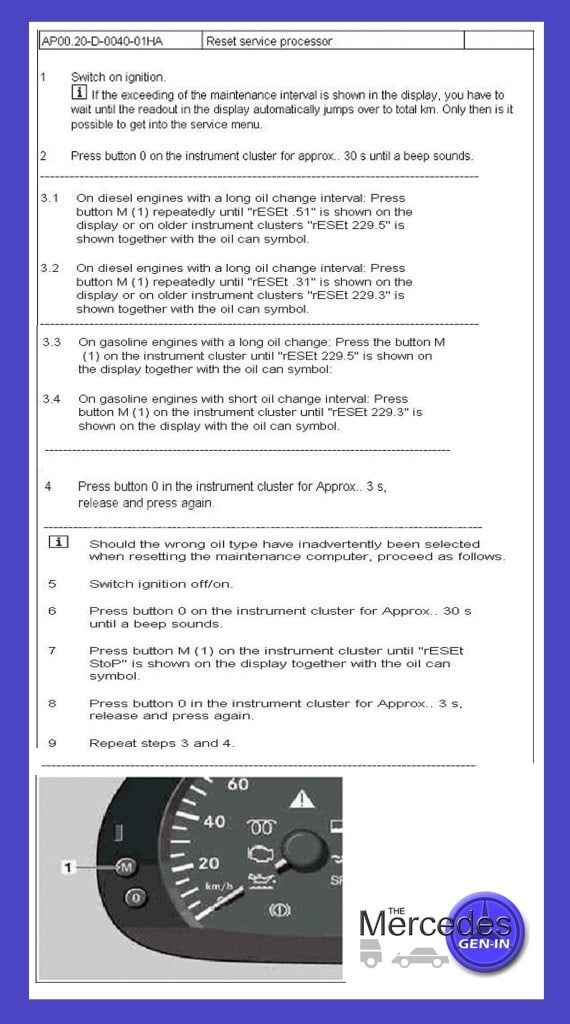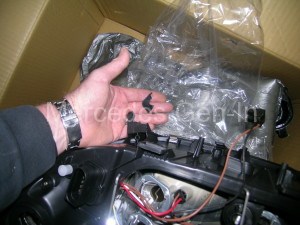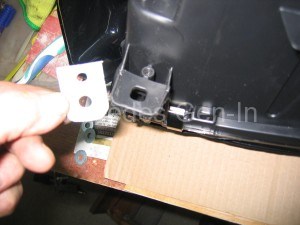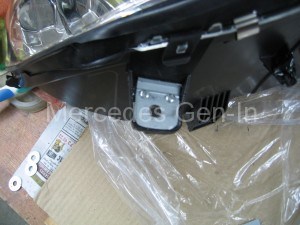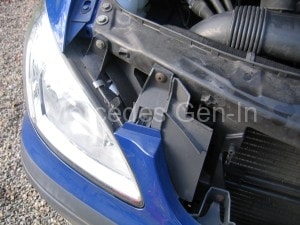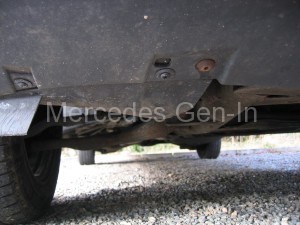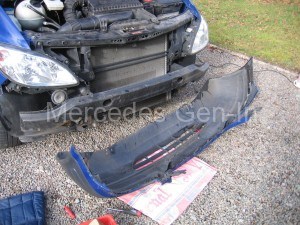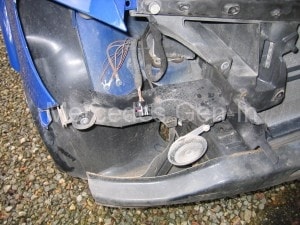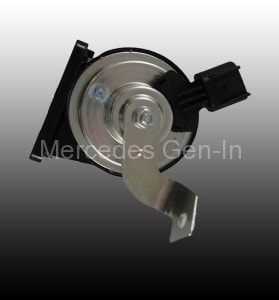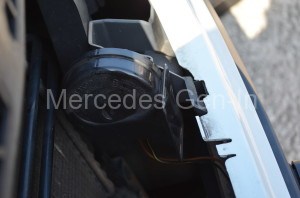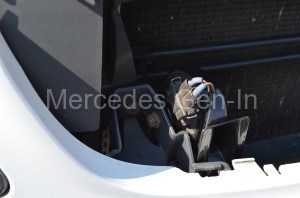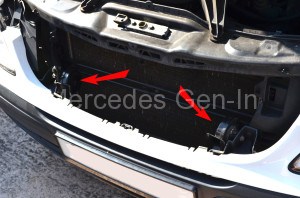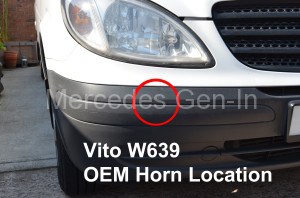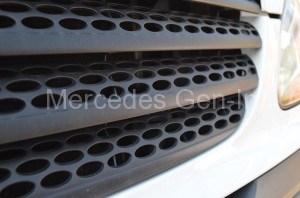Having rectified many ‘chuffing’ injectors and dealt with the famed ‘black-death’ on many sprinter engines and its close derivatives used across the complete range of Mercedes Diesel vehicles, I can honestly say that the hold down mechanism used to secure the injector in the head is definitely the engines number one Achilles heel. I am afraid that a single 6mm cap head pin used on one edge of a single steel injector clamp, tapped into an aluminium head is just engineering madness from a commercial maintenance point of view. Now that’s out of the way – rant over – how do we best deal with this problem and get that vehicle back on the road.
You will be reading this if you have begun to hear the release of combustion gas from around the engine bay of your vehicle (chuffing) or you may have discovered a black shiny coal like deposit building around one or several injectors (black-death) in addition to lacklustre performance and increased fuel usage. Before we carry on, it is of great importance to bring to your attention that we are dealing with a direct injection fuel system with operating pressures around 23,000 psi or 1600 bar! This fact is to be remembered when working on a running system, when either fault finding or during rectification – Serious injury may result if you do not respect the obvious dangers involved. If you cannot identify the dangers of working with very highly pressurised fuel systems you would probably be better to entrust the work to a specialist.
If the ‘chuffing’ has been noticed early on, none or very few ‘black death’ carbon deposits will be seen, just wetness from ejected diesel resulting from the failing combustion process forced up around the leaking injector out to atmosphere on the cylinder head. If carbon deposits are present then they will have to be completely cleared and chipped away with a blunt screwdriver/scraper and vacuumed away as you go.
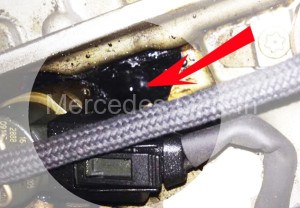
Injector Black Death Mercedes Sprinter
Because of the close proximity of other injectors it may be difficult to identify exactly which one is the culprit. If the leaking injector is not obvious, then clean down the area with Gunk or other degreaser and dry off the area (engine off of course) completely. Using 2 inch strips of old brown paper cut from the envelopes of your unpaid bills (joke) make hollow tubes and wrap them around the injectors, fastening the ends together with a paper clip. Do this for all suspect injectors. Start the engine and watch for the darkening/spotting of the brown paper with diesel spray, this will indicate quite clearly where the problem lies.
Once identified the work can begin – Run the engine until nice and warm then turn it off and remove the keys. Remove the turbo supply hose to the inlet manifold and split the composite intake manifold by removing the pins that secure it to the lower section. Remove the two pins that are also fastened to engine brackets at the rear and front of the head by the fuel filter. Lift off the manifold and stuff the remaining open ports with paper/cloth to prevent bits dropping inside. Check the gasket at the back plate/cover of the upper section of the inlet manifold as this is prone to squeezing out causing turbo boost leak and is this a good time to take a look/plan to rectify.
Remove completely the steel fuel supply pipe from between the leaking injector and the fuel rail along with its injector electrical connector; tie this cable out of the way of the work area. Remove the long single 6mm torx bolt that secures the injector clamp and place it safely to one side with the clamp itself. Inspect the threaded portion of the 6mm bolt if it is damaged or showing heavy signs of alloy material deposited on the threads then further action may be needed later on to rectify the threads in this failing all important tapped hole.
The next part of the procedure is ‘make or break’ for the DIY repair and is the point of no return so please take heed. Try to rotate the unclamped injector, if it moves freely by hand then great, if it won’t budge try a little more force – but not too much. If it’s seized then at this point re-assemble the engine and take it to a diesel specialist as damage to the injector or head can be very expensive indeed and botched repairs will easily exceed the cost of it being done by a professional in the first place – you have been advised. If the injector rotates, begin to pull it upwards whilst twisting the body, if it jams, twist it the other way and work it using some penetrant or WD40 in the area around where it enters the head. In some cases the injector lifts out instantly, in others it can take hours of wiggling and fiddling, don’t be tempted to use hammers or heavy tools to do this job as commonly expensive damage results. The image below shows damage to a rocker/cam cover caused by levering against it to extract a stubborn injector.
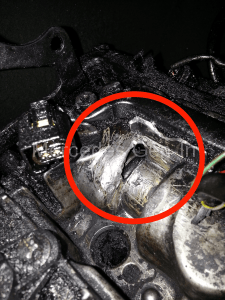
Damaged Sprinter Rocker Cover
Once the injector is out, clean it off and place it safely out of the way then recover the single copper washer from the hole in the head that forms a gas tight seal for the injector against the aluminium cylinder head. Use a torch to inspect the injector seat in the cylinder head, it will likely be blackened and carbonised, this needs to be cleaned off and in severe cases re-cut to present a perfect sealing surface. I have in the past had great success using a wooden dowel, rather like the ones used on a valve grinding hand tool. Using contact adhesive stick a square of medium abrasive paper to the end of a flush cut dowel, allow the glue to dry then trim round with scissors. Pop this tool down the hole and clean the seat as if you were grinding in a valve. Inspect it regularly and if there are slightly deeper grooves remaining keep going with new paper until clean and flat. Now the top tip, it will be necessary to purchase a new copper sealing washer. The best thing to do here is purchase a Honda part in preference to the genuine Mercedes Benz item. This washer is the standard CDI injector seal used on all modern Honda 2.2 litre diesel engines (More info on the Honda seal – here). I personally have had great success using the Honda part as they seem to be made from a superior material and appear more compressible thus making a better seal against any slight face imperfections.
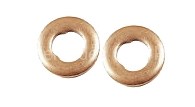
Sprinter Injector Seal
If your 6mm torx clamp bolt came away cleanly and without damage, discard the old one and purchase a new item from Mercedes. This part is a stretch type bolt and once used must be replaced. The bolt hole has to be spotless and clean and have no debris or metal swarf at its base. Any solids in the hole will be compressed at the base of the drilling when the bolt is tightened and can cause cracking or worse – bursting through into the water jacket of the cylinder head (really easily done) so clean that hole with an air-line or blow gun until you are sure it’s clear.
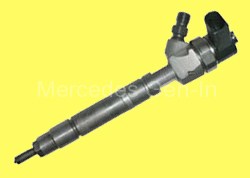
Sprinter Diesel Injector
Replace the injector with its new copper sealing washer, using a slight smearing of high temperature ceramic grease on the body sides and position it correctly with regard the electrical connector, replace the clamp and clamp bolt, fit the new clamp bolt and torque it down to 7Nm then 90 degrees turn to finish – NO MORE.
While the actual MB recommended spec for tightening the hold down clamp bolt is 7Nm plus 90 degrees, plus 90 degrees – 7Nm plus 90 degrees will provide a safer torque to yield on a new bolt in an old head.
The Honda washers are ‘softer’ (unmeasured science, but you can tell) and I have always consciously never bothered with the extra and last 90 degrees crank. Never had any trouble.
Each 90 degree rotation past 7 Nm with a new clamp bolt and clean hole results in a further 0.3mm stretch bolt yield, so my view has always been – softer composition, less crush and a little less beads of sweat on the final swing of the wrench! (Those threads are a weakness) Correct spec by the book with thinner less malleable copper MB washers is 7Nm +90 +90.
The full factual reference write up is here, I always have agreed with the final conclusion that offers this advice and hence never added the increased stress of the final 90 degrees. Obviously the final choice of wether to use the factory torque spec or the modified spec is entirely your choice, but the tests carried out below are well worth a read before you make that decision.
Technical Reference Article:-
Tightening the fresh hold down bolt and seal ring will produce the same clamping force (defined by seal ring crush thickness) regardless of which of the 2 torque specs are used.
The desired residual bolt stress (to achieve essentially infinite cyclical fatigue life) is achieved by both specs but the 2X 90 spec does allow for less care and precision during the tightening procedure. Torque spec #1 (62in/lbs +90) is certainly less risky if contamination may be lurking at the bottom of the very deep blind bolt hole. I suspect it is also somewhat less risky if the aluminum threads are not in ‘as new’ condition.
“Here at the Global Sprinter Research Center I am always eager to investigate Sprinter related technical issues.
Group members have noticed that Mercedes Benz has a published torque spec for the injector hold down bolts that seemingly differs significantly from the long standing DC published specs as shown in DC workshop manuals as well as on the instruction sheets that DC at one time included with replacement injectors. The extended threaded shank length, 85.83mm long, 6.0mm dia., 8.8 grade, factory hold down bolt, hold down pawl and injector seal ring are identical part numbers for both the 5 cyl. and 6 cyl. engines.
Using my ‘test’ 647 Sprinter cylinder head, which is permanently mounted to one of my work benches, I have recently performed tests related to hold down bolt torque. This dedicated ‘test’ cyl head has been quite useful in my repair tooling fabrication.
As many of you know I have developed in-house tools and fixtures for removal of broken hold down bolts, repair to stronger than new stripped hold down threads, and various custom black death repair tools for my in-house use. This test head features my custom carbon steel hold down threads making it ideal for these hold down bolt torque experiments because data is not compromised by any aluminum thread deformation or failure.
After careful measuring of bolt length (before and after torquing) and injector seat seal thickness to 0.01mm tolerance, and using a calibrated Snap-on electronic 1/4 inch drive torque wrench set to display in/lbs and accurate to 0.1 in/lbs, I have the following observations to report:
TRIAL 1– A fresh, factory hold down bolt torqued to 62 in/lbs (approx 7 Nm) and then an additional 90 degrees, results in 0.08mm crush of a fresh factory seal ring.
The Sprinter’s copper seat seal ring features a double convex cross section and the clamping force induced ‘crush’ creates narrow sealing flats on each side of the ring.
Monitoring the bolt torque during the 90 degree rotation reveals a peak of 180-190 in/lbs before full 90 degrees is achieved and remains at this level all the way to 90 degrees. This peak/plateau signals bolt yield has occurred.
TRIAL 2– A new seal ring and a fresh, factory hold down bolt torqued to 62 in/lbs. (approx. 7Nm) and then an additional 90 degrees X2 (FULL 180 degrees), results in the same 0.08mm crush of the seal ring as well as a steady 180-190 in/lbs torque reading during angle tightening.
Being a stretch to yield, non-reuse, bolt it was not surprising to see permanent elongation. Elongation was approx. 0.30mm for each increment of 90 degrees of tightening rotation (after the 62 in/lb initial torque).
TRIAL 3-A fresh hold down bolt tightened to failure. The bolt tolerated several additional 90 degree sequences PAST the initial 62 in/lbs and 2×90 degrees.
It has previously been reported that fresh hold down bolts have failed when several group members had torqued to 62 in/lbs and then 180 degrees (mistaking 1/2 turn for 90 degrees). I now suspect this occurred because of bolt bottoming in the base of the blind bore. Bottoming can occur because of debris at bottom of the blind hole.
CONCLUSION:
Tightening the fresh hold down bolt and seal ring will produce the same clamping force (defined by seal ring crush thickness) regardless of which of the 2 torque specs are used. The desired residual bolt stress (to achieve essentially infinite cyclical fatigue life) is achieved by both specs but the 2X 90 spec does allow for less care and precision during the tightening procedure.
Torque spec #1 (62in/lbs +90) is certainly less risky if contamination may be lurking at the bottom of the very deep blind bolt hole. I suspect it is also somewhat less risky if the aluminum threads are not in ‘as new’ condition.
Be sure you test your cyl head’s bolt hole threads by using a wire brushed used hold down bolt with an indexing paint mark, turning in by hand while counting turns, to assure threads are clean and bore is unobstructed to full depth. This is especially critical when performing black death surgery.”
Information source provided with thanks by Andy Bittenbinder
If you had a problem with the thread you can use this type of kit or as a more desperate measure carefully tap out the hole to 8mm using a long series drill and tap, if you do this you will also have to drill out the clamp bracket to accept the new diameter bolt. When drilling/tapping take care to not descend deeper in the head than you need to and break into the water jacket. Sometimes you may find that the previous repairer has broken into the water jacket – add a small amount of silicon gasket compound to the last section of threads of the pin and tighten down in the normal way. This is not the best way to get out of trouble, but will at least enable you to complete the job. If you don’t do this and a bolt hole is broken through – you will leak water!!
Now your injector is back together, in the cylinder head and clamped down, reconnect the steel fuel supply hose and electrical connector and build up the inlet manifold and turbo pipework. Start and test the engine. The engine should fire after a couple of cranks as no fuel bleeding is necessary. All should now be well with the repair and you have carried out a major maintenance repair saving you hopefully quite a lump of cash.
More info dealing with the actual removal/installation of the injector and its seal – here
Good luck.
